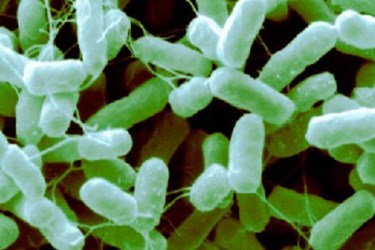The Salmonella Outbreak That Keeps On Giving
By Laurel Maloy, contributing writer, Food Online

More than a year after the first cluster of cases was discovered and traced back to Foster Farms chicken products, the CDC confirms the number of associated cases continues to rise
As of May 22, 2014, the number of people infected by Salmonella associated with Foster Farms since March 2013 has risen to total 574 across 27 states and Puerto Rico. The majority of confirmed cases have been reported in CA, with 37 percent of all persons requiring hospitalization. At this point in time, no deaths have been reported and the Foster Farms, outside of a week-long, self-imposed closing, has barely missed a beat in production.
Salmonella Heidelberg, the strain identified in this outbreak, is antibiotic resistant. The Centers for Disease Control and Prevention (CDC), in its latest update, dated May 27, seems to rationalize. The CDC admits this particular strain is resistant to antibiotics. However, in the same sentence, the CDC explains this away by saying that antibiotics are not “typically” used to treat Salmonella bloodstream or other severe Salmonella-related infections. The truth is that antibiotics can shorten recovery time and therefore, people are sicker for longer periods of time and are more susceptible to Salmonella-related invasive diseases. Salmonella can become entrenched in a specific organ, tissue, or the blood, at which point it is considered an “invasive disease” and is more likely to result in hospitalization or death. In this outbreak, an unprecedented 15 percent of cases are developing blood infections, a number usually hovering around five percent, though no deaths have been reported.
Almost a year ago, on June 17, 2013, the rare Pulsed-field Gel Electrophoresis (PFGE) strain of Salmonella Heidelberg was identified. The complete timeline, up to Apr 7, 2014 can be viewed here. A recall was not initiated by Foster Farms, though the strain was traced back to three California-based Foster Farms facilities. Instead, Foster Farms was allowed to make procedural changes in its slaughtering and processing methods, prompting the USDA to approve its continuing operations. Foster Farms, though not issuing a formal recall, pulled product from retailers’ shelves. The formal recall was initiated by FSIS (Food Safety Inspection Service).
In the wake of this ongoing threat to the public, FSIS educated consumers on how to prevent cross contamination and reiterated the importance of cooking chicken to an internal temperature of 165 degrees Fahrenheit. Concurrently, as during any ongoing outbreak, the FSIS website will post public health alerts and recalls as they become available.
Foster Farms seems to have taken the approach, “the less said the better.” In the wake of this massive outbreak, 30 consumer advocate groups called for the company to make public an accounting of its antibiotic use in its poultry operations. Mexico stopped importing Foster Farms’ chicken products packaged in all three California plants and Foster Farms continues to experience a financial backlash, losing nearly 25 percent of its sales in the first few months.
And the saga continues as 50 new cases of this antibiotic resistant strain of Salmonella Heidelberg have been reported in the last two months. The CDC is confirming about eight new cases a week, mostly in California. The agency goes on to explain that raw poultry commonly has Salmonella bacteria, whether “produced by Foster Farms or any other brand” and urges consumers always follow these food safety tips. There is no current recall for Foster Farms products.
